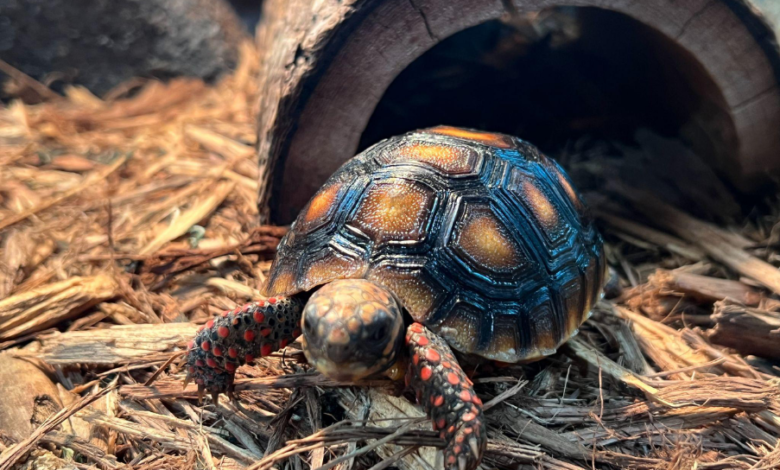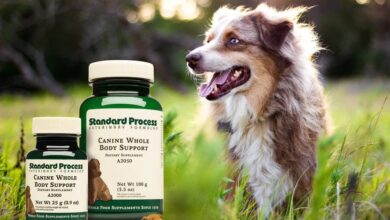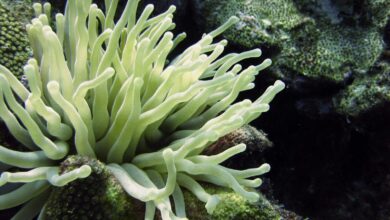Which Tortoise Breeds Make the Best Pets?

Just like dogs and cats, tortoises also have different breeds with variable traits and behaviors. That is one of the primary reasons why beginner tortoise parents get confused while choosing the perfect breed. If you are one of those, this blog is the perfect guide for you.
We have streamlined seven popular tortoise breeds that make the best pets. From the elegant cherry head tortoise to the small and cute Egyptian breed, we have researched every species that fulfills a great pet’s standards. Let’s dive in and find a perfect tortoise for your home!
1. Indian Star Tortoise
Indian star tortoise, also known as star tortoise, is a low humidity species with unique markings on the shell. The reptile’s dark and bright color contrast helps you recognize it instantly. These species can live up to 80 years and grow up to 12 inches. As for their enclosure requirements, you may have to base the decision on the reptile’s size. Typically, 10-12 square feet of space is enough for an Indian star tortoise.
These species must have limited water exposure. Therefore, while setting up the enclosure, make sure they do not have open water sources. Remember, a water bowl will increase the humidity in the habitat. So, it would help if you limit the exposure and use a dry substrate. It will not only help regulate the temperature but also prevent any respiratory infection.
2. Leopard Tortoise
Being the fourth largest tortoise species in the world, they can grow up to 18 inches. Due to their shell pattern of black and tan/brown spots, they are named after leopards. You may consider buying them for their captivating beauty but only choose this species if you’re willing to set up a larger enclosure.
Considering their larger size, they need at least 12-20 square feet of space as an ideal habitat. These large tortoises aren’t a fan of digging or climbing. Also, they are not cold-tolerant. So, if you’re living in a place where the temperature drops drastically at night, consider other options on this list.
3. Marginated Tortoise
Marginal tortoise makes a perfect pet, thanks to its longer lifespan. This species can live up to 40-80 years. Moreover, it needs just 8-10 square feet of space to thrive, which is average compared to other tortoise species. Unlike the previous two species, marginated tortoises love to climb and dig. So, to prevent their escape, the walls must have an optimum height and be sunken deep into the ground.
4. Cherry Head Tortoise
These moderate-sized tortoises can grow from 8 to 12 inches in size. Their bright red and orange color, along with the red spot on the head, is the reason why they are named cherry heads. These tortoises can live up to 50 years with proper care.
Furthermore, the cherry head tortoise is not seen hibernating, which is one of their biggest highlights. However, there is a reasonable decrease in this reptile’s activity in colder weather. This pet is perfect if you have other tortoises in the house as well. Unlike other species, this tortoise is not territorial at all. Therefore, you can place them in an enclosure with other males without the risk of any damage or injury from fellow reptiles.
5. Hermann’s Tortoise
Hermann’s tortoise is one of the smallest species pet parents choose nowadays. This breed’s handling and care are much more accessible than other species due to the smaller size. Therefore, they are considered the most common pet tortoise species as well. There are multiple subspecies of this tortoise available at stores, with western Herman’s tortoise being the most common one.
When it comes to building its enclosure, the owners must keep the walls high because this breed loves to climb. Herman tortoise is very active and interacts with the owner often. Therefore, you won’t be bored in their presence. However, due to their increased activity, you must supply extra enrichment for the tortoise. The best way would be to fill the enclosure with plants and rocks so they never get bored of the habitat.
6. Russian Tortoise
If you’re a beginner trying to find the perfect tortoise pet, this breed is perfect for you. The Russian tortoise is known to be a hardy species and easier to care for. Additionally, they are far more active than other tortoises. The most impressive highlights of these reptiles are their claws.
Every foot has four sharp claws that help them burrow. Considering the fact that these species love to burrow, ensure that you fill the enclosure with plenty of substrate. Also, ensure you take all the precautionary measures to prevent escape and protect them from predators.
7. Egyptian Tortoise
Egyptian tortoise is the perfect breed if you’re looking for a smaller reptile pet for your tortoise table. Due to their smaller size, they need a smaller enclosure. However, that doesn’t mean the Egyptian tortoise is easier to look after. On the contrary, this breed has very strict temperature, humidity, food, and handling requirements that are necessary for their well-being.
Egyptian tortoises live in a dry environment. However, they are prone to water and should have a bath 2-3 times a week. When it comes to temperature change, these guys are extremely intolerant. They thrive in warm temperatures, so ensure you maintain the conditions artificially with the proper equipment.
Things To Remember Before Buying A Tortoise
Buying a tortoise is a thrilling adventure, but it’s not a decision to be taken lightly. These unique creatures require specific care, and choosing the right one involves understanding various factors. Here’s what you need to know:
- Consider Lifespan: Tortoises live a long time, some even over 100 years. Make sure you’re ready for a lifetime commitment.
- Legal Requirements: In some places, certification is required for certain species. Therefore, always buy from a reputable breeder to avoid supporting the illegal pet trade.
- Space and Enclosure: Different species require different spaces. Whether it is a tortoise table or a whole room, ensure you have the right environment.
- Diet and Health: Proper feeding and UVB lighting are essential. Plus, be aware of potential health issues like respiratory disorders or shell rot.
- Cost: Apart from the purchase price, consider the cost of the enclosure, lighting, and ongoing care before buying.
Conclusion
Choosing the right breed of tortoise for your home is like finding a new friend. Whether you’re drawn to the majestic leopard tortoise or the charming cherry head tortoise, each breed has its unique personality and care requirements. Remember, the best pet isn’t just about appearance or size but compatibility with your lifestyle.
Therefore, do your homework, consult with experts, and maybe even spend some time with these gentle creatures before deciding. Additionally, don’t hesitate to contact fellow tortoise owners or communities online. Their shared experiences and tips can make your tortoise-owning journey even more rewarding.



